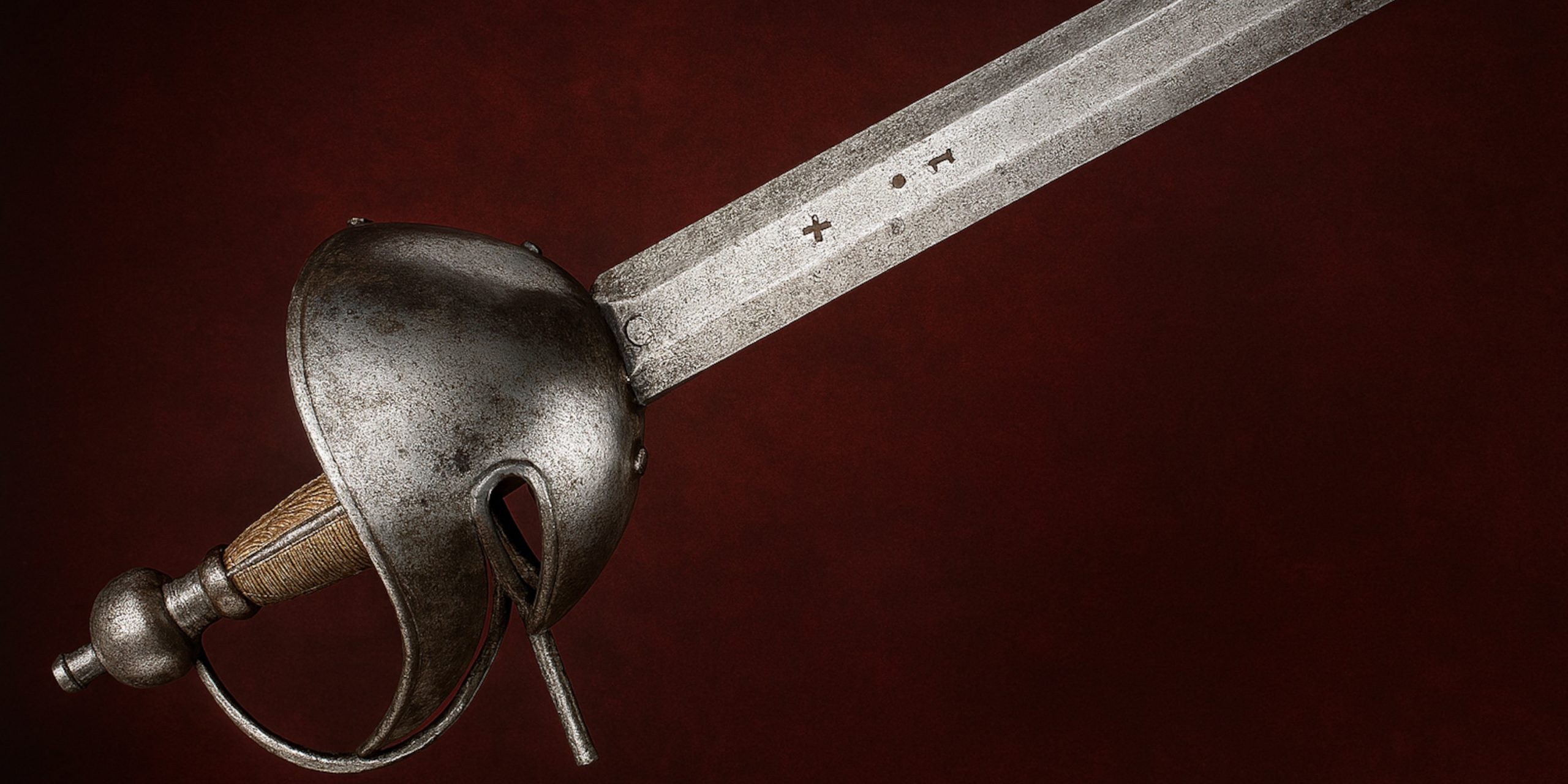
The Bilbo is a type of cut-and-thrust sword popular from the late 16th to early 18th century. Often associated with Spanish manufacture, particularly from the Basque port of Bilbao, the Bilbo became a favoured weapon aboard ships and among colonists in the Americas. Its reputation stemmed from durability, ease of handling, and effectiveness in close combat. Though less ornate than court swords or rapiers, the Bilbo was valued as a working weapon.
Specification
| Feature | Description |
|---|---|
| Blade Length | Typically 28 to 32 inches |
| Blade Type | Double-edged, often with a strong taper |
| Hilt | Complex guard with finger rings or side rings |
| Grip | Wood or bone wrapped in wire or leather |
| Weight | Approximately 1.0 to 1.5 kg |
| Balance | Close to guard, suited for one-handed use |
| Primary Use | Cut-and-thrust combat |
History and Evolution
The term “Bilbo” likely comes from Bilbao, a city in northern Spain known for exporting quality blades. From the 16th century onwards, blades were forged in Europe and often hilted locally, especially in colonial settings. The sword gained popularity across the Atlantic, where settlers needed reliable sidearms for personal defence.
Bilbos were frequently used aboard ships, both merchant and naval, as they were more practical and durable than decorative rapiers. Their form evolved over time, reflecting the regional preferences of those who carried them. While early examples had basket hilts or complex guards, later versions often used simpler, more affordable hilts.
Advantages and Disadvantages
Advantages:
- Well-balanced and light, allowing fast cuts and thrusts
- Durable construction suited to harsh environments
- Affordable and widely available during its period
- Compact enough for shipboard and close-quarter fighting
Disadvantages:
- Lacked the reach and prestige of a full-length rapier
- Functional design often lacked ornamentation
- Later examples could be of variable quality due to mass production
Comparison with Similar Weapons
| Feature | Bilbo | Rapier | Cutlass |
|---|---|---|---|
| Primary Use | Cut-and-thrust | Primarily thrust | Primarily cut |
| Blade Length | Shorter than rapier | Long and slender | Short and broad |
| Guard | Complex or simplified | Intricate swept hilts | Simple knuckle guard |
| Context | Civilian and naval use | Duelling, civilian wear | Naval boarding actions |
| Prestige | Low to moderate | High | Moderate |
Legacy
The Bilbo is often viewed as a practical tool of its age rather than a ceremonial or duelling weapon. Its widespread use in colonial and maritime settings reflects its reputation for reliability. Though sometimes overshadowed by more elegant weapons, the Bilbo has a respected place in collections focused on naval history and early European expansion. The name also became a generic term in some regions for any short sword or hanger.
Where to See
Authentic Bilbo swords can be found in various museums, particularly those with maritime or colonial collections.
- Royal Armouries, Leeds – European naval swords
- Museo Naval, Madrid – Spanish cut-and-thrust weapons
- Smithsonian Institution, Washington D.C. – Colonial era arms
- Musée de l’Armée, Paris – Transitional sword types
- Jamestown Settlement, Virginia – Weapons from early American colonies
Collectors Guide (Including Auction Prices)
Bilbos are valued for their historical significance rather than artistry. Prices depend heavily on condition, provenance, and rarity.
Collector Considerations:
- Check blade markings for origin, especially Toledo or Solingen stamps
- Inspect hilt design; early basket-hilted examples are rarer
- Look for colonial or naval provenance
- Restored pieces often sell for less than untouched examples
| Condition | Estimated Price Range (GBP) |
|---|---|
| Museum-grade, full provenance | £8,000 to £15,000 |
| Good condition, colonial origin | £3,000 to £6,000 |
| Functional but worn | £1,000 to £2,500 |
| Fragmented or poor condition | Under £800 |
Bilbo swords offer a practical insight into the tools of early modern warfare, especially in naval and colonial contexts. While they lack the ornate flair of aristocratic swords, their reliability and functional design make them a compelling piece of edged weapon history.



